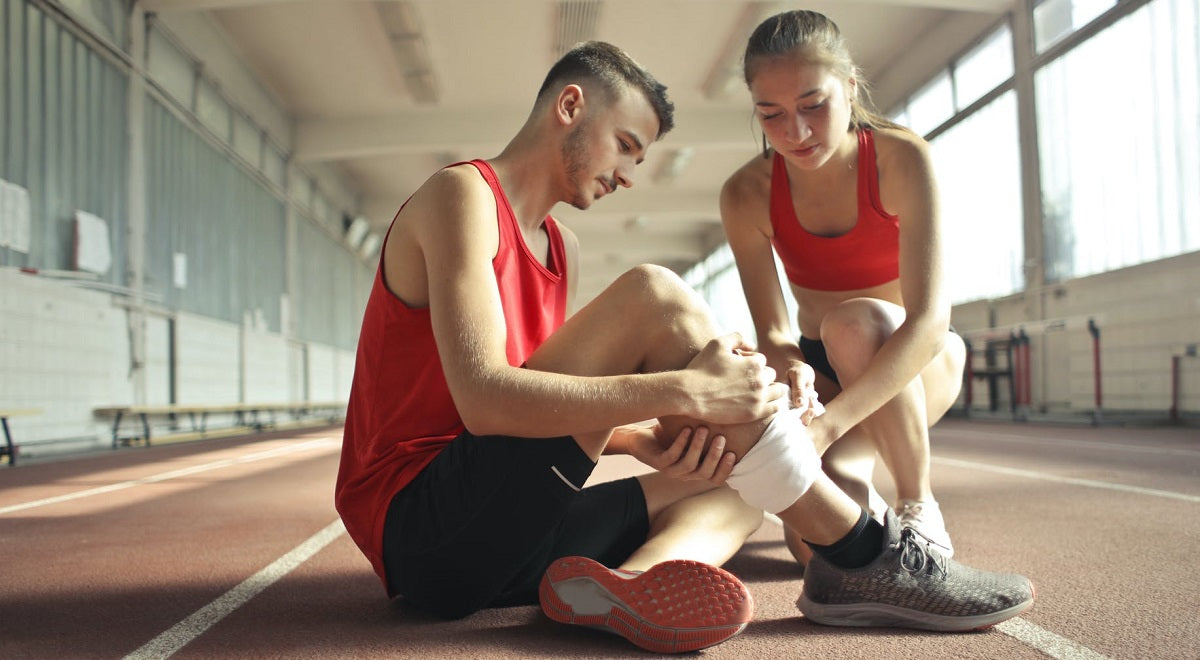When you injure yourself and your cells are damaged, the area around the injury becomes inflamed. This response includes the release of antibodies and proteins, as well as increased blood flow to the damaged area. This is your body’s response to fighting things that harm it, such as infections, injuries, and toxins, in an attempt to heal itself.
Your initial reaction might be to take an anti-inflammatory medication, but this may in fact, slow the healing process. Mopani Pharmacy long-time pharmacist, Jaco Venter shares his top tips on how you should treat your injury.

The first two days: “PRICE”
“We commonly refer patients to the PRICE method. It is an acronym that stands for paracetamol, rest, ice, compression and elevation.”
“You may take a common paracetamol pain reliever like Panado to alleviate the pain. Be careful not to over-do it, you need to still feel something to prevent yourself from further injuries.”
“Rest is a crucial part of your treatment, as you need to allow bone and muscle to heal before further strain takes place. Your injury may require a few off days, or a few weeks, depending on the severity. Ask your physician, physiotherapist, biokineticist or pharmacist for a guideline.”

“Icing, also known as cryotherapy, involves the use of ice packs or a bag of frozen peas, to slow down the metabolic activity in the area. This has to be done as soon as possible after the injury, to keep swelling to a minimal. Just heed caution as to not give your skin any freeze burns. You can alternate by placing the ice pack on the area for five minutes, then take it off for five minutes. Do not use ice packs after two days. You may also use Arnica Ice cooling gel for some pain relief.”
“Compression will help to suppress bleeding and excessive swelling in the area. You can achieve this by applying a bandage snuggly around the injured area or adding a brace. In the more severe cases, a doctor may prescribe a cast. This will limit mobility or immobilise the injured extremity, which will aid in healing.”

“If you have injured your arm, hand or fingers, raise it above your heart. If it is a lower extremity, lift it above your pelvis. This will prevent swelling by increasing the blood flow away from the extremity.”
After two days

“At this point, you can take anti-inflammatories to help assist with pain, inflammation and swelling. If the injury does not require the extremity to be completely immobilised, your physio therapist may recommend some therapy to keep your joints from becoming stiff. A light massage with arnica oils can increase blood flow to the area. If your foot is in a cast, for example, you can rub your calf and toes. The increase in blood circulation will help flush toxins away and carry nutrients and oxygen to the area to promote healing. You may also use heat packs, pads or microwavable bean bags. This will help to alleviate pain around muscles and joints.”
After a few weeks

“If you have been in a cast for a while, you may need some physiotherapy and stretching exercises to strengthen your muscles and keep your ligaments elastic. It is crucial to keep to the recommended regime, to ensure that you do not re-injure yourself or have severe, everlasting affects.”
We can deliver your medication, supplements, cosmetics, fragrances and other Mopani online shopping, nationwide. Contact us for info: mopani.co.za | crossing@mopani.co.za | Tel: 0137555500 | WhatsApp: 0661921703


